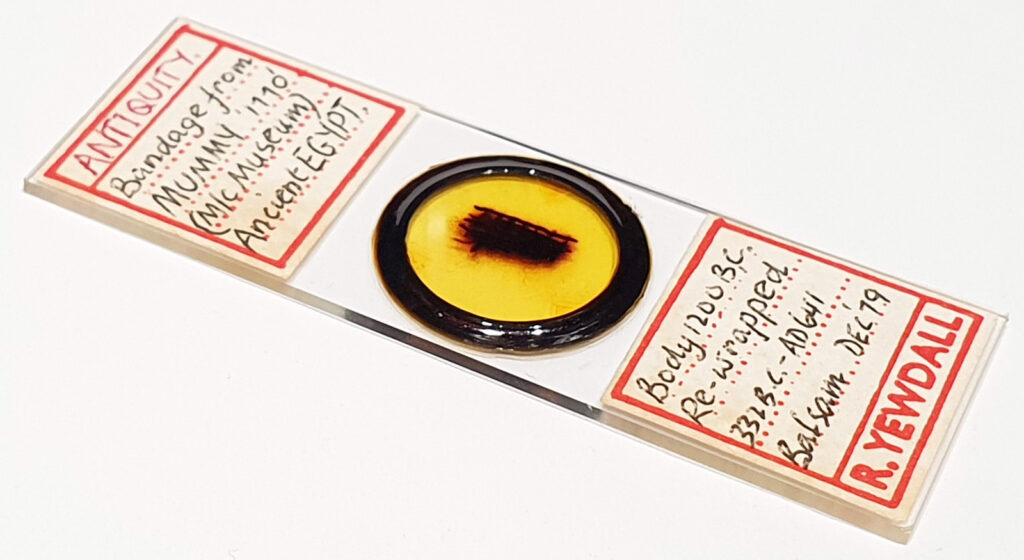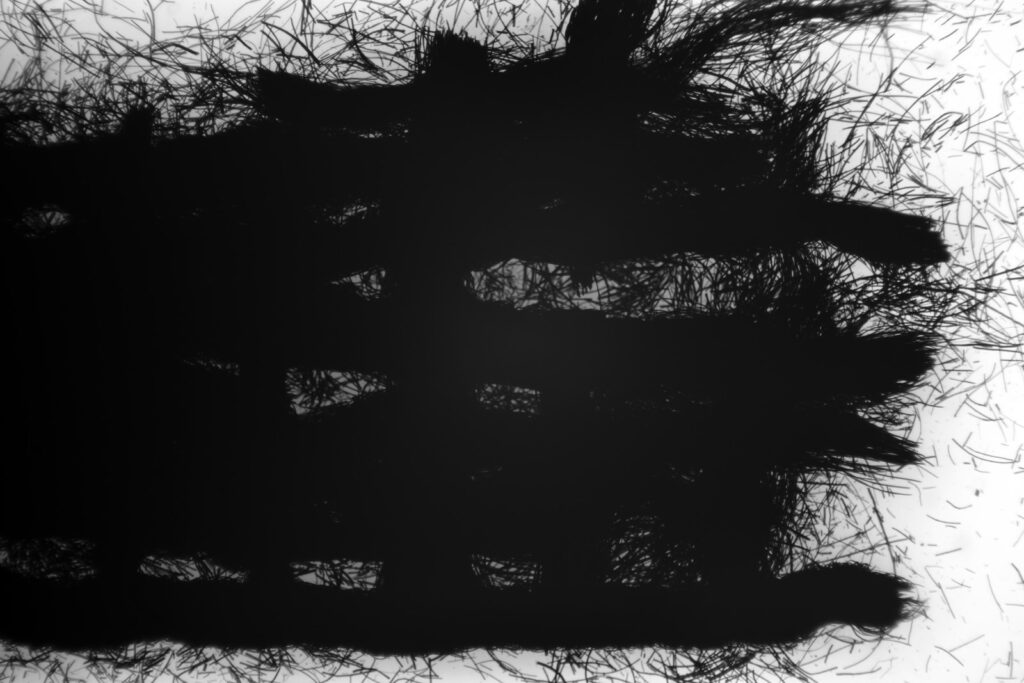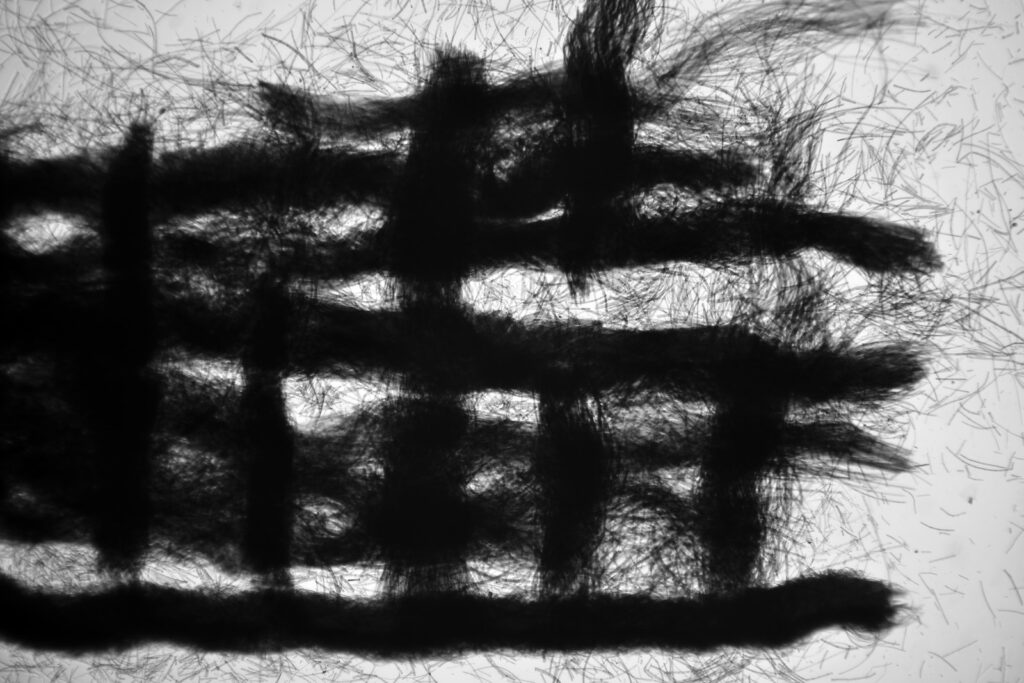A few weeks ago I managed to get a microscope slide of bandage from Mummy ‘1770’. Mummy cloth slides do appear occasionally and as I didn’t have one in my collection I thought it would be interesting to image. Mummy 1770 is in Manchester University and in the mid 1970s was unwrapped for study (more on that here). I presume this slide was made as part of this work. The was prepared by R. Yewdall and the slide is shown below.

Looking at the slide I got to wondering whether this would be good sample for imaging with different wavelengths of light. I was assuming the bandage had been dyed, and that using longer wavelengths might make any dyes more transparent. I did a quick and dirty set of experiments imaging the bandage with 3 different wavelengths on my microscope;
450nm – white LED light with a 450nm, 40nm FWHM bandpass filter.
560nm – white LED light with a 650nm, 10nm FWHM bandpass filter.
>830nm – halogen light with a 830 Heliopan longpass filter.
Imaging was done on my Olympus BHB microscope using a 2x Olympus Fl Splan NA 0.08 objective and photographed using a monochrome converted Nikon d850 camera. The full frame is shown and the field of view is about 3.5mm across.



With the 450nm blue light, the fibers are very optically dense, showing as black in the image. It is difficult to make out much of the structure of the bandage here. With 650nm light the fibers are now becoming more transparent and a bit more of the weave can be seen. With IR light of >830nm is used any dyes present are much more transparent and more can be seen of the weave structure itself. There are also some very dark specs visible in the bandage, which could not not be made out when imaged with the shorter wavelengths. These are presumably dirt that woven into the bandage, or have come from the breakdown of the mummy over time.
Choice of illumination has a huge impact on the final image, and simply by changing the wavelength of light being used can emphasize different aspects of the subject. Thanks for reading, and if you’d like to know more about my work I can be reached here.
